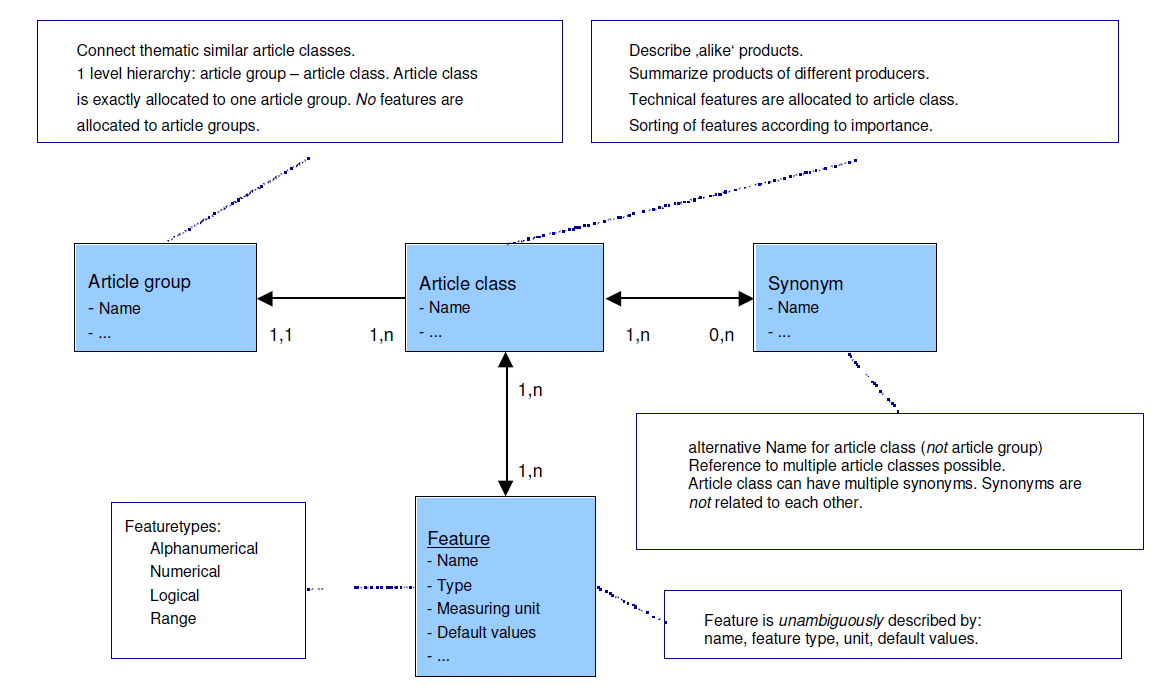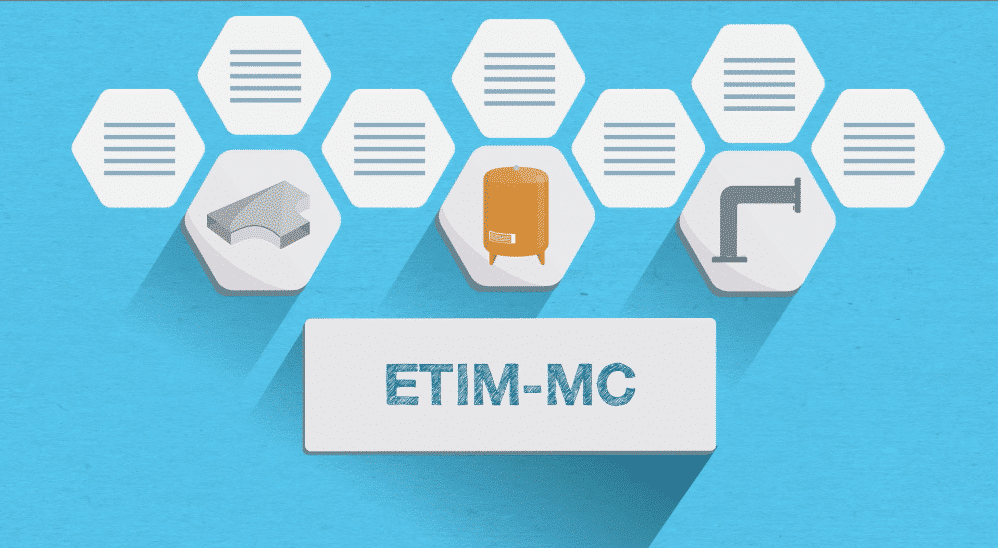Introduction
The ETIM Classification model includes the following categories or entities:
- Product groups
- Product classes
- Synonyms (Keywords)
- Features
- Values
- Units
Group
The ETIM model is a two-level classification model. The two levels relate to product groups and product classes and each product class is assigned to one single product group. Nevertheless, ETIM has a flat organizational structure: the group level was solely instated to enable easy product class management. Essential – and the real focus of ETIM – is the definition of product classes and their features.
Class
A class in ETIM describes similar products and bundles products of different manufacturers or suppliers. All product classes have different features to specify the technical characteristics of the products in the class. The features of each class are structured according to their importance as well as key aspects (dimensions, features of electrical data, etc).
Feature
A feature is clearly described by description, feature type, unit and/or value.
Feature types:
A – alphanumeric = list of possible values (e.g. red, green, long, short, …)
L – logic = yes or no questions (also known as Boolean; “true” or “false”)
N – numeric = one numeric value
R – range = two numeric values that limit a range of values
Value
To each alphanumeric feature of an ETIM class, a fixed, alphabetical list of possible values is assigned.
Unit
Numerical and range features always need a unit of measurement defining the expected value. An exception are features like “number of…”. These numerical features do not need a unit.
Synonym
Also often referred to as “keyword”, a synonym is an alternative name for a product class (not for a product group). A synonym may refer to several product classes and a product class may have several synonyms, but synonyms are not related to each other, nor do they have an ID: each synonym is directly assigned to an ETIM class (language-dependent). Local ETIM organizations are responsible for the synonyms in their respective languages. However, the ETIM classification model’s default language is ‘ETIM English’, upon which all translated versions of the format are to be based. The TC manages its default (British) English version, including the assignment of synonyms.

Screenshot example, from CMT tool, of an ETIM class containing all relevant feature types.
ETIM MC (Modelling Classes)
ETIM Modelling Classes (ETIM MC) is an extension to our basic classification model, specifying parameters for representation of products as 3D geometric objects. As such, ETIM MC enables uniform exchange of 3D product data among users and CAD software. ETIM MC was purposefully developed as an extra layer around the core model, leaving the basic model untouched. In other words, no added complexity if you only use the basic ETIM classification!
So far, ETIM MC comprises of 360 classes for the ‘most modelled’ products. The extension, developed in the Netherlands, is now recognized as an official ETIM International standard. With plenty of countries interested its international implementation, though still in its early stages, looks promising. Especially, since ETIM MC is seen as a potentially forceful driver for the application of ETIM in BIM (Building Information Modelling). For more information see the animated video on ETIM MC.

